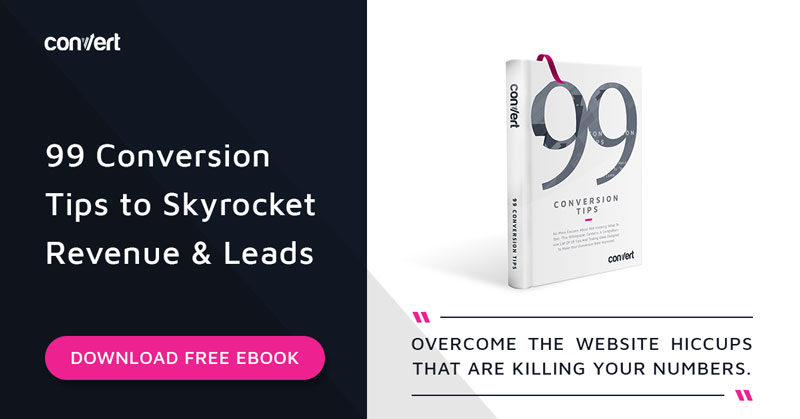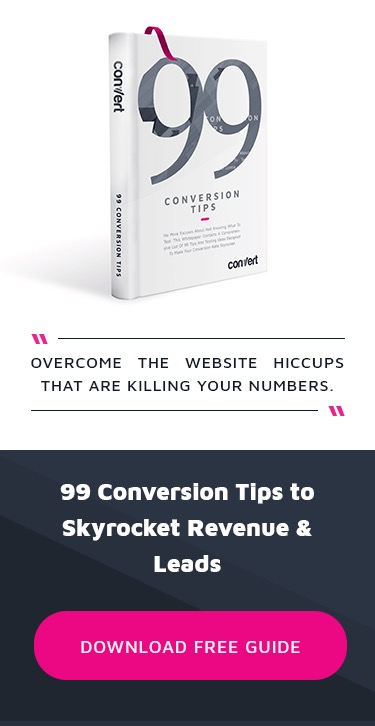Content marketing is one of the most effective ways to increase your on-site conversions. Content is able to provide 3 times more leads than a PPC campaign, but more importantly, it’s more effective in the long run: Content is your permanent brand asset. Once you put it on your site, it can continue bringing in conversions, whether you keep investing in its marketing or not.
Yet, quite surprisingly, content marketing strategy often lacks any actual planning or goal setting. Most brands are inclined to be publishing content for the sake of publishing content (or simply because their competitors are doing that) which is a marketing tactic doomed to failure. As a result, most online businesses don’t see any actual ROI from their content marketing investment.
So how to plan your content marketing and align it to your conversion optimization efforts? Here are three steps that have worked incredibly well for me:
Optimize Content for Search Intent
Search intent is one of the most important ranking and conversion factors, yet it’s most often neglected. Behind each search query there’s a human being trying to solve a problem, research more or buy. Google is using search intent to better serve its users, which is obviously their #1 priority.
If you ever see your well-written well-optimized content struggling to rank, re-optimizing it to match search intent better is usually a very effective remedy leading to higher rankings and higher conversions.
So how to better optimize for search intent?
Google is your first tool to check here. Simply searching Google for your target keyword will give you a lot of clues as to what kinds of content formats and answers tend to satisfy the search user best. With its answer boxes and blended results, Google can help you better understand what it is a user intends to do when searching. Here’s a helpful chart to give you a better idea:
Here are also a few screenshots showing how Google search elements help you evaluate the possible search intent:

For effective search intent optimization, simply searching Google is not enough though. The thing is, Google has been perfecting its algorithm for ages. It’s not always obvious why they consider a certain page to satisfy a given query best.
Furthermore, not all queries are that straightforward. In many (most) cases, there may be several types of intent behind one query. Besides, in many cases people are not even sure what they are likely to do once they see search results. Google has learned to cater for all these cases. And there are tools that know how to reverse-engineer Google’s editorial decisions to help you optimize your content accordingly.
Text Optimizer is a nice tool helping you match your content to search intent by using semantic analysis to turn Google’s search snippets into actionable optimization tactics.
Simply run your core query through TextOptimizer and it will return the list of neighboring and related terms and concepts that will help you match your content to Google’s (and its users’) expectations.

You can use TextOptimizer to (re)optimize your old pages and create new content. Actually, if you do both, you are likely to see your organic traffic steadily grow within two or three weeks. Keep your TextOptimizer score to 70 or higher to optimize your content for search intent and hence better conversions.
Include Your CRO & Sales Teams into Content Planning and Marketing
From what I’ve seen, at any big or small digital brand, there’s always some type of disconnect between content marketing and sales departments.
And it’s most unfortunate because your conversion optimization and sales teams know your customers best as they are the ones monitoring your sales and talking to your actual clients on a regular basis.
Including your sales team into your content marketing process can make a huge difference: They are likely to help your content team to better target your customer by sharing insight into their daily struggles, actual questions they tend to ask and what type of help they are usually seeking. I have already written a detailed article on how sales team can help you achieve your marketing goals by including them into your content creation efforts:
- Get sales team’s input to create product Q&A and FAQ sections
- Get their help help in creating an on-site glossary
- Have them contribute their thoughts on what type of lead magnets may work to engage your audience better
- Ask them to help your content team to create buyers’ personas to create more engaging, more relatable content
Apart from content creation, your sales team may have a lot of input into how you market your content too as they know your audience better than you do. You may want to include them into creating your overall social media marketing schedule for your on-site content promotion.
ContentCal is a solid social media marketing collaboration solution allowing you to engage many teams into creating your social media sharing calendar.
- Encourage your sales, customer support and customer support teams to add content to ContentCal’s “Pinboard” (using varied messaging they think will help engage more of your social media followers) for you – or your social media manager – to drag and drop updates throughout the calendar to schedule them. The “Pinboard” is the central point for all your teams to see what goes live on your multiple channels and how you craft your marketing schedule
- Use color-coding to let your team members see how your content assets are spread out throughout a week

ContentCal helps you include your whole team into your social media marketing encouraging them to contribute to your brand’s channels.
Streamline Your Content Planning Using Checklists
Content planning includes a lot of tasks and a lot of teams involved. To keep all the pieces together, you need to get organized. It’s a good idea to start by creating a higher-level content roundup using Google spreadsheets (by implementing these reusable calendar templates) but it’s not enough.
To make sure each of your content assets is ready to go live and aligns to your brand’s style and voice, you need to keep all the smaller tasks done, each time, no matter who is pushing the “Publish” button.
I use Serpstat to manage checklists for my own content assets. Serpstat checklists are reusable (simply save your checklist as a template and create a new one for each of your articles with one click of a button).
The tiny quality assurance tasks I have there include:
- The article contains at least one call for an action
- The title, H1 tag, and description, keywords meta tags are filled in for all pages (Here’s a quick checklist for these)
- The article contains at least three images (and those images are well-optimized for search). Images can make a huge difference to your conversion optimization efforts.
- The article contains at least 3 internal links to other article and money pages
- The article is broken into meaningful subheads (marked up with H2 and H3 tags) using related questions from “People Also Ask” boxes and TextOptimizer’s “Topic Ideas“

Each item in the checklist has a short description explaining why it is important to complete. I believe that every team member needs to always understand why every task they are managing fits into the broader content optimization process.
Now, before publishing an article, my content manager can go through these items and check each of them once she makes sure all the important search- and conversion-optimization elements are in place.
There are many more to-do list managers you can try but I have found Serpstat to be the most marketing- and collaboration-friendly.
And how are you planning your content strategy? Please share your tips by tweeting them to @seosmarty
Originally published March 21, 2019 – Updated January 21, 2022
Mobile reading?
Authors



